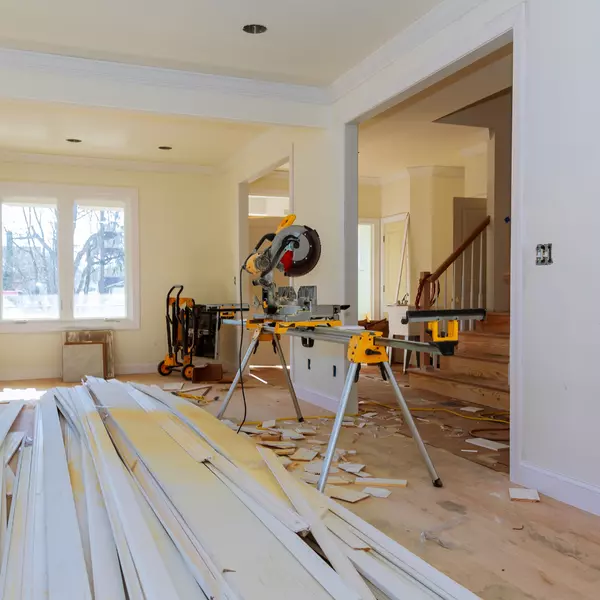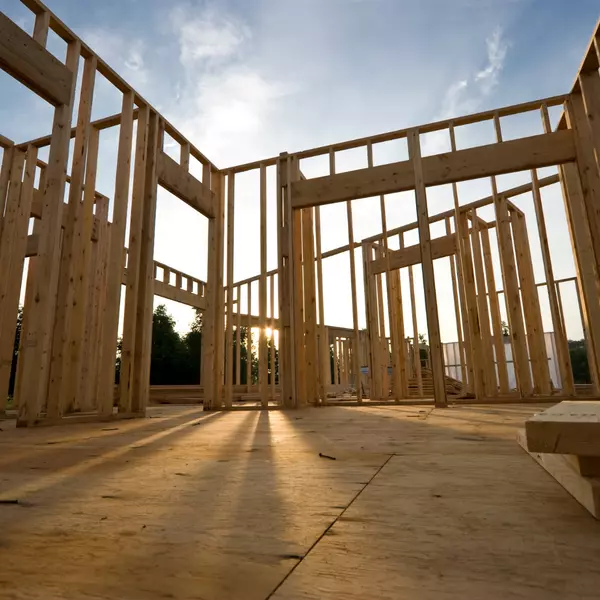The Homeowners Guide; Building Permits 101

The Homeowners Guide; Building Permits 101
11 min read
Soo, what exactly is a building permit, why do we need them, and where did they come from?
Let’s dive into the history, purpose, and process of the building permit! Even if you’re not a homeowner yet, a building permit is something that is or will be a very important part of many homeowners dreams. It is a great bit of knowledge to have in your back pocket when it comes time to doing any work in or around your home.
How Did Building Codes Begin?
Although some will argue that building codes and permits are a relatively new age system, they’re just not. We have seen evidence that ancient civilizations had implemented some systems to avoid human error and horrific failure in buildings. The oldest evidence of this comes from Hammurabi, founder of the Babylonian Empire about 2000 BC.
Here in the United States, our building codes were initially put into place addressing fire safety and specified materials for roofing in 1625. Just a few years later Boston made chimneys made of wood and thatch roof coverings illegal due to the obvious safety risks. While creating building plans for the District of Columbia, George Washington suggested creating height and area limitations for wood frame buildings in 1770. So on and so forth more codes were added until we reached the current building codes that we have today. 1
What Does the Permit Have to do with Codes?
As a country, we have national building codes, then we move into state codes that may be a bit more restrictive, and then down to local town/city codes which may be even a bit more restrictive (then we can even move down to neighborhood, HOA, and a few more codes as well, but you can read about those here). With so many residential homes in each area, the local officials needed a way to make sure that all of the work going on is safe for its citizens. This is where building permits come into place.
A building permit is an official document that gives you permission to build on land or make changes to a building
Now I know, I know, there are many people that believe you shouldn’t have to pull a permit if you own your home, it’s yours, shouldn’t you be able to do what you want? Of course, to a point.
Example 1:
Imagine if you finally owned that beautiful 4 bedroom 3 bath dream home of yours, you LOVE the home, but before you move in, you just want to change up the flooring. You bring in someone that you’ve never met, didn’t get a referral to, and said they could get the job done… and for cheap too. This person comes in with a crew to do the work, you wait 2 weeks for the floors to be ripped up, new ones put in, and a final finish that completes the look of your dream kitchen. You finally can move into your dream home! Congratulations!
While moving in you notice some squeaky annoying boards, or a soft spot in your brand new floor. Well what could have happened?
One scenario could be, your “contractor” gave you a cheap price because their not from the area, so they didn’t pull a permit to save a few hundred bucks, got into your home, ripped up the old floor and found some issues. There could have been an area of rotted subfloor and joists. This contractor didn’t pull a permit, so they knew no one was going to check on their work ,they didn’t want the job to be more work, so they didn’t fix the uncovered issue and just tossed new flooring on top. Now you have a beautiful home with a beautiful new floor, that you have to rip up.
How Does the Permit Help me With This?
With a situation like this, the permit can help give a home owner peace of mind for starters. When a building permit application is submitted, you must provide the information of the contractor, a copy of their license, and a copy of their insurance. So when you have a building permit on your side, you can feel better about knowing that your contractor is a licensed and insured party, and that they take their work and your safety as a customer seriously.
Example 2:
Now imagine you have fixed all of your flooring issues, your dream home is the perfect dream, and fast forward 6 years. You are in need of an additional room, weather you are having a baby, a family member is moving in, or you decided you just need some more space! Thinking back about your flooring issue a few years ago, you don’t want to hire someone you don’t know again. So distant cousin Joe has a friend who does AMAZING work. Your cousin pledges that he trusts this contractor so you hire him to add 1 bedroom and 1 bathroom to your home.
Everything goes smoothly with this contractor, you have an incredible new addition to your home, the work went surprisingly quickly, and you’ve made a new friend in the process.
Fast forward again! It’s been another 5 years and there has been a big decision to leave your dream home and move to another town. You list your home for sale by owner, and things are going great. you’ve accepted an offer, and the appraisal is scheduled!
Appraisal day, the appraisal is a step in the home sale process where a third party unbiased appraiser comes to your home, and checks that the home is with the amount of money the offer is. (To learn more about the appraisal process and what its purpose is, click here!) The appraiser will know that in public records your home is still considered to be a 4 bedroom 3 bath home, not a 5 bedroom 4 bath home, so they look into this discrepancy.
And what do they find? That cousin Joe’s buddy didn’t pull any permits for your addition.
The town decides to take action against you for not following the legal route and pulling a permit for your addition.
The town/city can do 1 of 2 things here:
-
They may make you pay a fine for avoiding the permit which would have originally only been a few hundred dollars, is now thousands.
-
Due to the inspector not being able to…well…inspect that all of the work was done properly, they could make you revert the home back to its original standing before the “illegal” work was done. Which is going to cost not just thousands more in the work itself to demolish the addition and get the home back to its previous version. But also, more time and possibly a lost sale.
How Does the Permit Help me With This?
When applying for a permit, the scope of work is described so the town is aware of what type of work is being done. When it comes to adding bedrooms and bathrooms, depending on the septic system you already have, the town may tell you that you need a larger septic system with your addition. If you have a system rated for only 4 bedrooms, then adding another bedroom (more people) and bathroom pushes you over the limit. There is a possibility that you could over work/fill your septic system. So the permit in this case, allows the town to make sure your septic system is adequate for the amount of…flow it will be receiving. This can be traced back to making sure you, your family, and your neighbors are safe. A disrupted septic system is hazardous to the people, plants, and wildlife around it.
Another reason the permit would help you in a situation like this, is routine inspections. Once a permit is pulled, and the town is aware of the type of work you are doing and the location it is happening, a building inspector will be scheduled to check on the work periodically. This, once again, goes right back to your safety.
While all areas will vary, most jobs will be inspected at different stages:
Fodunation inspection
Framing inspection
Electrical inspection
Plumbing inspection
Roofing inspection
etc.
So, if you’re adding a new bathroom to your home, the town wants to make sure the plumbing was done properly and to code. This is to insure that you won’t have any un-needed plumbing issues such as; wrong sized pipes, loose pipes, uninsulated were needed, etc.
When adding new walls, they want to make sure the electrical is done properly and to code, looking to make sure there are no issues; incorrect wire type, crossed wires, open and live wires, too small of a breaker box to support the power, etc.
Example 3:
Okay, so you have fixed what you needed to fix. You’ve sold your home, and you’re buying a new one a few towns over! Everything abut it is perfect, even more so than the last home! Except it needs a new roof. Don’t worry, this is a quick one
So here we are again, you call in someone to fix the roof. They don’t pull a permit and one of their workers falls off the roof! The employee that fell off the roof is now suing you, the homeowner, and the head contractor.
How Does the Permit Help me With This?
Well, had you had a permit pulled. Once again, the contractors information, license, and insurance policy would be on file. The employee who fell would be going through workman’s comp to settle his injury suite. No one gets sued in the process. *All situations differ, always follow legal practices to cover liabilities.
Bottom Line of the Building Permit…
Yes it is an extra step. Yeah it is an extra trip to the town/city hall. Of course it is an extra fee. And yes your property will be inspected durring the process, but bottom line is…just pull a permit. It is an incredible peace of mind to know that whoever is doing the work is licensed and insured, and whether the licensed and insured or yourself is doing the work, you know an inspector will be around to make sure everything is safe for you after work has been completed.
Okay so I’m on Board. How Does it Work?
The process of getting a building permit will vary depending on a variety of variables:
-
Town/City officials and your local Building Department regulations
-
Type of work being preformed
-
Type of property where work is being done
-
The individual property
-
etc
Generally speaking though,
-
You as the homeowner can either fill out a permit application yourself, or have the contractor do this for you. Some areas have the permit available online, some will be in person only.
-
After filling out all appropriate information on the application, you or your contractor will need to submit the application for review. This may also be provided online or in person.
-
Along with submitting the application, you will need to make a payment to the town. This price will vary depending on many items. The type of job, type of property, and what calculation your local building department will use to get the number. Most of the time a check is preferred.
-
After leaving the town with your permit and payment, you or your contractor will be contacted in a few days after verifying information and approving the job.
-
You will head back to the Town/City Hall and pick up your building permit!
-
Permits will contain information such as the property address, Town/City seal, and scope of work being done.
-
While work begins and progresses, a building inspector will pop in on scheduled or unscheduled times to verify that the work being done is correct, up to code, and safe for all parties involved.
-
If the inspector finds something that is not up to code, they will most likely make you halt the job and fix the problem. If they find something (such as old work done without a permit) they may make you stop all work indefinitely until all items are done properly.
Your Home is One of Your Largest Investments
So treat it as such! Pull your permits, protect your home, self, family, friends, and anyone that walks through the door of your beloved home.
Please visit your local Town or City Hall or contact your local building department for information specific to your area!
Recourses For Orando Residents:
Not in Orlando?
To find local information please Google “Town/City name building department”
Or reach out to us with any questions you have! We’er happy to help and happy to answer!
Sources Provided By:
Recent Posts










"My job is to find and attract mastery-based agents to the office, protect the culture, and make sure everyone is happy! "
